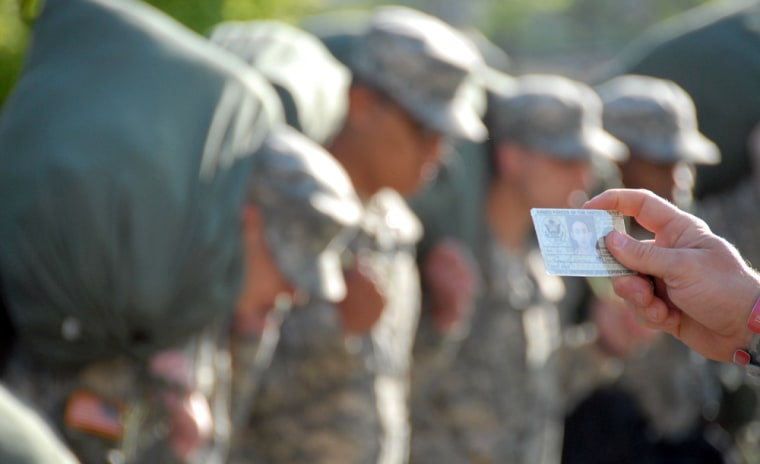Hollywood may have to tone down its portrayal of the military’s screaming, in-your-face boot camp drill sergeant.
In today’s Army, shouting is out and a calmer approach to molding young minds is in, says the head of Pentagon personnel.
The Army says it has reduced by nearly 7 percent the number of recruits who wash out in the first six to 12 months of military life.
“Part of it is changing the nature of how it treats people in basic training,” David S. Chu, undersecretary for personnel and readiness, said Tuesday.
That means “less shouting at everyone, in essence, which some of you may remember from an earlier generation as being the modus operandi,” he said.
The changes started about a year ago, as defense officials looked for ways to make drillmasters more effective, said Lt. Col. Mike Jones, head of Army National Guard recruiting.
He said the old way was to “talk loud, talk often, get their attention” — shock treatment to teach discipline and mold the newly recruited civilian into a soldier.
But trainers found today’s generation responded better to instructors who took “a more counseling” type role, Jones said, using strong tactics when needed but keeping them the exception instead of the rule.
No longer training in fear
The approach has had two positive results, he said: It has lowered attrition among those who go through training each year and has eased one of the greatest fears of recruits — their fear over whether they can make it through basic training.
Other changes aimed at improving graduation rates include such things as letting recruits with injuries or minor medical problems remain in the service, heal, and then go back to training. Before, an injury would have meant discharge, training officials said.
Numbers differ from service to service and depend on what the recruit is being trained for. Those training to be Navy SEALS or other special forces may wash out at the rate of 70 percent. Those training to be truck drivers may have an 80 percent graduation rate.
But Chu said that across all services, generally, some two-thirds of recruits finish their enlistment period — typically three or four years.
Some drop out within six months
Of the third who don’t make it, half bomb out in the first six to 12 months, Chu said, adding that the attrition rate is better than most private sector firms.
Keeping a balance in the number flushed out of the service is important. Too many dropouts and you lose people you really want to keep. Too few dropouts, and you are keeping people you should have let go, Chu said.
Both the military and police academies are moving away from harder-edged approaches to training, he said.
“However much it may be satisfying from the shouter’s perspective, it really isn’t the best way to shape young people for the future,” Chu said.
He made the comments as he announced that all active duty services had met their recruiting goals for the budget year ended Sept. 30. The Marine Corps Reserve met its goal and the Air Force Reserve exceeded its goal, but they were exceptions among guard and reserve forces, some of which have seen “heavy use” due to the wars in Iraq and Afghanistan, Chu said.
